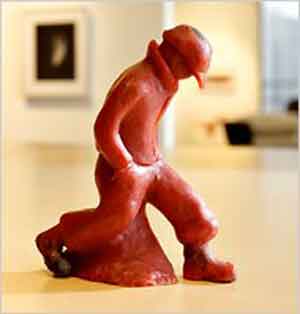Theopraxesis: Allegory
![]() Allegory of Konsult. Plato in Republic condensed his metaphysics of education in the allegory of the cave, We take this famous story as a relay, prompting us to propose an allegory that dramatizes the equivalent experience of education in electracy. We will explore several possibilities throughout KE, beginning with the film version of The Wizard of Oz, based on the novels by L. Frank Baum. We recall the story of the cave was a round trip: the prisoner released from chains, turned around (converted), led out of the fire-lit cave into the sunlight outside, expected then to return to bring the news of this other world to the cave. This theme of Nostos (round trip, ida y vuelta) structures Homer’s Odyssey, of which Oz is said to be a remake update. A key point in our allegory relative to this tradition is the moment of consulting. Odysseus is prevented from returning home to Ithaca, held in thrall by Circe. Circe relents and tells Odysseus that to learn how to return home he must consult with Tiresias in Hades.
Allegory of Konsult. Plato in Republic condensed his metaphysics of education in the allegory of the cave, We take this famous story as a relay, prompting us to propose an allegory that dramatizes the equivalent experience of education in electracy. We will explore several possibilities throughout KE, beginning with the film version of The Wizard of Oz, based on the novels by L. Frank Baum. We recall the story of the cave was a round trip: the prisoner released from chains, turned around (converted), led out of the fire-lit cave into the sunlight outside, expected then to return to bring the news of this other world to the cave. This theme of Nostos (round trip, ida y vuelta) structures Homer’s Odyssey, of which Oz is said to be a remake update. A key point in our allegory relative to this tradition is the moment of consulting. Odysseus is prevented from returning home to Ithaca, held in thrall by Circe. Circe relents and tells Odysseus that to learn how to return home he must consult with Tiresias in Hades.
–Apparatus. The allegory helps clarify the difference in metaphysics separating the apparati. Each has a fundamental understanding of reality, and each focuses all its resources to manage the system of cause and effect according to the respective realities. In the oral world of Odysseus, gods represent cause, and humans manage this energy by means of ritual, sacrifice, worship. Odysseus’s behavior gave offense to the gods, thus activating the right-wrong metaphysics of orality. To gain access to Hades, Odysseus performs a ritual sacrifice of oxen, collecting the blood, which attracts the spirits of the dead, including Tiresias, who arrives and counsels the hero about his return home. Socrates as gadfly in the streets of Athens performs a literate consultancy, using dialectical logic questioning interlocutors, according to the true-false reality of literate metaphysics. The Wizard of Oz suggests a third manner of consulting, relative to the reality structuring electracy (Fantasy).
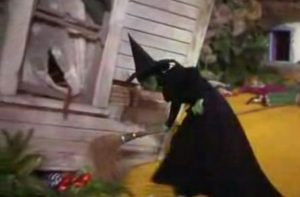 –Scenario. Assuming familiarity with the synopsis of the narrative, we may outline the allegorical import. In general the narrative is instructive of mystorical design in that there is an isotopic rhyming between Dorothy’s world in Kansas and the fantasy world of Oz. The encounter of these two orders is dramatized when Dorothy’s house lands in Oz, crushing the Wicked Witch of the East, whose red shoes Dorothy inherits. The tornado that interrupted a family crisis in Kansas represents Disaster. Dorothy is egent, or soul (psyche) in the allegory, and her journey to find the Wizard to get his advice dramatizes the egent’s actualization of her capabilities in theopraxesis. The three capabilities (virtues, faculties) are represented by the three companions Dorothy meets along the way, the Yellow Brick Road. The three figures embody the significance of the lack articulated in the term “egent” (they lack). The three companions represent the three virtues in a state of privation, Steresis, potentiality not realized (im/potence). Their impotence is a projection of Dorothy’s virtuality, her lack, the condition of any ephebe on the way. The three figures manifest the tripartite system of virtues, but Baum euphemized the assignments somewhat, blending heart and gut. In our appropriation of the story for konsult allegory the alignment with the tradition is clear: Scarecrow wants a brain (Knowledge, Theoria, Head, Rulers); Lion wants courage, so heart (Will, Praxis, Guardians); Tin Woodman’s problem is not his “heart” but his “axe” (enchanted by the witch), which prevents him from loving (having sex). He represents Viscera (Desire, Poiesis, Workers).
–Scenario. Assuming familiarity with the synopsis of the narrative, we may outline the allegorical import. In general the narrative is instructive of mystorical design in that there is an isotopic rhyming between Dorothy’s world in Kansas and the fantasy world of Oz. The encounter of these two orders is dramatized when Dorothy’s house lands in Oz, crushing the Wicked Witch of the East, whose red shoes Dorothy inherits. The tornado that interrupted a family crisis in Kansas represents Disaster. Dorothy is egent, or soul (psyche) in the allegory, and her journey to find the Wizard to get his advice dramatizes the egent’s actualization of her capabilities in theopraxesis. The three capabilities (virtues, faculties) are represented by the three companions Dorothy meets along the way, the Yellow Brick Road. The three figures embody the significance of the lack articulated in the term “egent” (they lack). The three companions represent the three virtues in a state of privation, Steresis, potentiality not realized (im/potence). Their impotence is a projection of Dorothy’s virtuality, her lack, the condition of any ephebe on the way. The three figures manifest the tripartite system of virtues, but Baum euphemized the assignments somewhat, blending heart and gut. In our appropriation of the story for konsult allegory the alignment with the tradition is clear: Scarecrow wants a brain (Knowledge, Theoria, Head, Rulers); Lion wants courage, so heart (Will, Praxis, Guardians); Tin Woodman’s problem is not his “heart” but his “axe” (enchanted by the witch), which prevents him from loving (having sex). He represents Viscera (Desire, Poiesis, Workers).
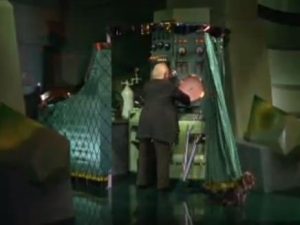 –Wizard. The scene of consultation with the Wizard, when Psyche and her three Capabilities make their requests, shows the full arrangement of apparati and their relationship at the collective level. In this expanded scene, the microcosm/macrocosm individual/collective isotopy is made explicit: Tin Man is Paleo (Family, sexual fertility), Lion is Oral (Church), Scarecrow is Literate (School), Wizard is Electrate (Entertainment). Much theory could be referenced here to support this configuration. To mention Lacan, for example, the Wizard is the Big Other, the one supposed to know, whose hold over us it is the purpose of therapy to dispel. The immediate value of the Oz allegory is to highlight this passage in education, the adventure of learning (dealing with the trials testing Psyche/Dorothy) as actualization of the three capabilities. Equally important is the fact that the Wizard is augmented capability, imagination mise-en-macbine, with the imperative of the allegory being for us to understand how Oz makes able, activates, the three virtues so Dorothy may return home (overcome disaster).
–Wizard. The scene of consultation with the Wizard, when Psyche and her three Capabilities make their requests, shows the full arrangement of apparati and their relationship at the collective level. In this expanded scene, the microcosm/macrocosm individual/collective isotopy is made explicit: Tin Man is Paleo (Family, sexual fertility), Lion is Oral (Church), Scarecrow is Literate (School), Wizard is Electrate (Entertainment). Much theory could be referenced here to support this configuration. To mention Lacan, for example, the Wizard is the Big Other, the one supposed to know, whose hold over us it is the purpose of therapy to dispel. The immediate value of the Oz allegory is to highlight this passage in education, the adventure of learning (dealing with the trials testing Psyche/Dorothy) as actualization of the three capabilities. Equally important is the fact that the Wizard is augmented capability, imagination mise-en-macbine, with the imperative of the allegory being for us to understand how Oz makes able, activates, the three virtues so Dorothy may return home (overcome disaster).
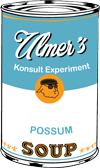
 Conduction (the fourth inference) is visceral. The image logic (reasoneon) we are developing as Gest suffers fallacies just as does the reasoning of abduction, deduction, and induction. Physiognomic inference operates in the type-casting of cinema, exploiting the same emblematics as racism, as in Nazi propaganda. This danger is a reminder that electrate rhetoric articulates the visceral dimension of intelligence (racists are physically repulsed by miscegenation, for example). This effect of concrete logic should not be denied or euphemized, but addressed as a resource in understanding the thymotic force operating in personal and public discourse.
Conduction (the fourth inference) is visceral. The image logic (reasoneon) we are developing as Gest suffers fallacies just as does the reasoning of abduction, deduction, and induction. Physiognomic inference operates in the type-casting of cinema, exploiting the same emblematics as racism, as in Nazi propaganda. This danger is a reminder that electrate rhetoric articulates the visceral dimension of intelligence (racists are physically repulsed by miscegenation, for example). This effect of concrete logic should not be denied or euphemized, but addressed as a resource in understanding the thymotic force operating in personal and public discourse.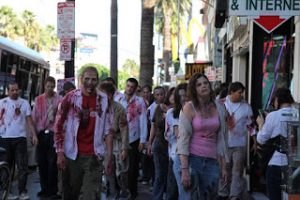 The existence of polysemous meaning has been noted throughout history–the repetition of patterns, the isotopies relating the different registers of the semiosphere (Lotman). Learning how to read these patterns is part of theopraxesis, since in the condition of the General Accident (that happens everywhere simultaneously [Virillio]) judgment and decision must be capable of registering macrocosm from details. That recognition of patterns does not dictate interpretation directly, to which may be added the Casandra effect. One of the better known examples of anticipation of disaster is the novel Futility, or The Wreck of the Titan, the 1898 novel by Morgan Robertson that foretold (in retrospect) the sinking of the Titanic (1912).
The existence of polysemous meaning has been noted throughout history–the repetition of patterns, the isotopies relating the different registers of the semiosphere (Lotman). Learning how to read these patterns is part of theopraxesis, since in the condition of the General Accident (that happens everywhere simultaneously [Virillio]) judgment and decision must be capable of registering macrocosm from details. That recognition of patterns does not dictate interpretation directly, to which may be added the Casandra effect. One of the better known examples of anticipation of disaster is the novel Futility, or The Wreck of the Titan, the 1898 novel by Morgan Robertson that foretold (in retrospect) the sinking of the Titanic (1912).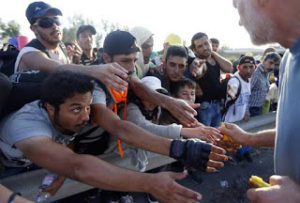
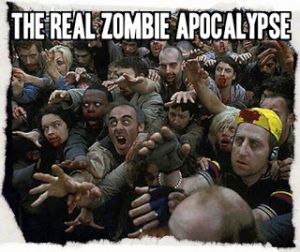 Many reports indicate that many millions of people will be displaced by these conditions globally. The present crisis is advanced warning of what is to come on a much larger scale. What policy response is in keeping with the imperative of well-being against disaster? The Zombie scenario warns of total war. Philosophers such as Jacques Derrida urge the self-described impossibility of Hospitality. It is important to note that left theory long ago identified our horror motifs as icons and emblems of life under Capitalism. Politics in any case concerns the just allocation of finite resources. The General Accident of climate change demands a holistic response.
Many reports indicate that many millions of people will be displaced by these conditions globally. The present crisis is advanced warning of what is to come on a much larger scale. What policy response is in keeping with the imperative of well-being against disaster? The Zombie scenario warns of total war. Philosophers such as Jacques Derrida urge the self-described impossibility of Hospitality. It is important to note that left theory long ago identified our horror motifs as icons and emblems of life under Capitalism. Politics in any case concerns the just allocation of finite resources. The General Accident of climate change demands a holistic response.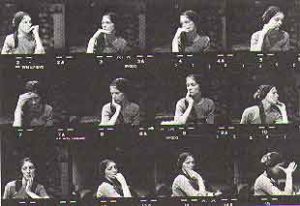
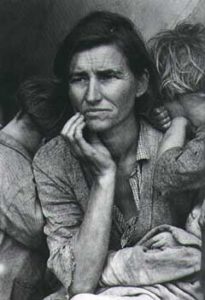 Nancy Kitchel’s “grandmother’s gesture” may be seen as a series of variations on a gesture of worry and anxiety codified in this photograph taken by Dorothea Lange as part of a New Deal project to document the misery of migrant workers, sponsored by the Farm Security Administration during the Great Depression. “Migrant Mother” is one of the most-cited pictorial images of our times.
Nancy Kitchel’s “grandmother’s gesture” may be seen as a series of variations on a gesture of worry and anxiety codified in this photograph taken by Dorothea Lange as part of a New Deal project to document the misery of migrant workers, sponsored by the Farm Security Administration during the Great Depression. “Migrant Mother” is one of the most-cited pictorial images of our times. This idea I have that the whole inside of my head resembles this landscape (flat? nothing there?), that the particular, peculiar sense of great space, isolation in space, harshness, clarity, severity, the constant transitions, shifts, reveries, the wild swings form one state to another, forms the visual, auditory, reasoning, base for thought or action. A sense that I have been formed out of the quality of the landscape, that everything unnecessary is being slowly eroded by harsher elements. And the confidence that I will survive, denuded, or that something will survive, something will never stop.”
This idea I have that the whole inside of my head resembles this landscape (flat? nothing there?), that the particular, peculiar sense of great space, isolation in space, harshness, clarity, severity, the constant transitions, shifts, reveries, the wild swings form one state to another, forms the visual, auditory, reasoning, base for thought or action. A sense that I have been formed out of the quality of the landscape, that everything unnecessary is being slowly eroded by harsher elements. And the confidence that I will survive, denuded, or that something will survive, something will never stop.”  Our first memories are visual ones. In memory life becomes a silent film. We all have in our minds an image which is the first, or one of the first, in our lives. That image is a sign, or to be exact, a linguistic sign. So if it is a linguistic sign it communicates or expresses something. I shall give you an example. The first image of my life is a white, transparent bind, which hangs–without moving, I believe–from a window which looks out on to a somewhat sad and dark lane. That blind terrifies me and fills me with anguish: not as something threatening and unpleasant but as something cosmic. In that blind the spirit of the middle-class house in Bologna where I was born is summed up and takes bodily form. Indeed the images which compete with the blind for chronological primacy are a room with an alcove (where my grandmother slept), heavy “proper” furniture, a carriage in the street which I wanted to climb into. These images are less painful than that of the blind, yet in them too there is concentrated that element of the cosmic which constitutes the petty bourgeois spirit of the world into which I was born. But if in the objects and things the images which have remained firmly in my memory (like those of an indelible dream) there is precipitated and concentrated the whole world of “memories,” which is recalled by those images in a single instant– if, that is to say, those object and those things are containers in which is stored a universe which I can extract and look at, then, at the same time, these objects and things are also something other than a container. . . . So their communication was essentially instructional. They taught me where I had been born, in what world I lived, and above all how to think about my birth and my life. Since it was a question of an unarticulated, fixed and incontrovertible pedagogic discourse, it could not be other–as we say today–than authoritarian and repressive. What that blind said to me and taught me did not admit (and does not admit) of rejoinders. No dialogue was possible or admissible with it, nor any act of self-education. That is why I believed that the whole world was the world which that blind taught me: that is to say, I thought that the whole world was “proper,” idealistic, sad and skeptical, a little vulgar–in short, petty bourgeois. (Pier Paolo Pasolini, Lutheran Letters, trans. Stuart Hood. Carcanet Press: New York, 1987).
Our first memories are visual ones. In memory life becomes a silent film. We all have in our minds an image which is the first, or one of the first, in our lives. That image is a sign, or to be exact, a linguistic sign. So if it is a linguistic sign it communicates or expresses something. I shall give you an example. The first image of my life is a white, transparent bind, which hangs–without moving, I believe–from a window which looks out on to a somewhat sad and dark lane. That blind terrifies me and fills me with anguish: not as something threatening and unpleasant but as something cosmic. In that blind the spirit of the middle-class house in Bologna where I was born is summed up and takes bodily form. Indeed the images which compete with the blind for chronological primacy are a room with an alcove (where my grandmother slept), heavy “proper” furniture, a carriage in the street which I wanted to climb into. These images are less painful than that of the blind, yet in them too there is concentrated that element of the cosmic which constitutes the petty bourgeois spirit of the world into which I was born. But if in the objects and things the images which have remained firmly in my memory (like those of an indelible dream) there is precipitated and concentrated the whole world of “memories,” which is recalled by those images in a single instant– if, that is to say, those object and those things are containers in which is stored a universe which I can extract and look at, then, at the same time, these objects and things are also something other than a container. . . . So their communication was essentially instructional. They taught me where I had been born, in what world I lived, and above all how to think about my birth and my life. Since it was a question of an unarticulated, fixed and incontrovertible pedagogic discourse, it could not be other–as we say today–than authoritarian and repressive. What that blind said to me and taught me did not admit (and does not admit) of rejoinders. No dialogue was possible or admissible with it, nor any act of self-education. That is why I believed that the whole world was the world which that blind taught me: that is to say, I thought that the whole world was “proper,” idealistic, sad and skeptical, a little vulgar–in short, petty bourgeois. (Pier Paolo Pasolini, Lutheran Letters, trans. Stuart Hood. Carcanet Press: New York, 1987).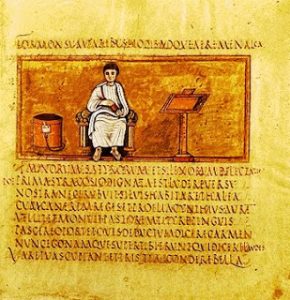 From Agent to Egent. These posts undertake a meandering trace of inquiry. KE reviews Ulmer’s work of the past four+ decades in order to understand it again, whole, as if given all at once, in a flash of insight. Egents undertaking konsult are interlocutors, collaborators, tutors. The purpose is to compose and design a discourse on method, in the tradition running from Plato’s Phaedrus to contemporary French philosophy, describing and testing a mode of learning native to electracy (the digital apparatus). The outline necessarily begins in literacy and school. The coming pedagogy is also explored elsewhere, in the context of EmerAgency (conceptual konsulting, without portfolio), addressing the curriculum reform in progress at MIT as well as Digital Humanities institutionalization. The discussion across disciplines concerns TPE (Theopraxesis)–a shared interest in learning how to learn in digital civilization, using heuretics, the logic of invention.
From Agent to Egent. These posts undertake a meandering trace of inquiry. KE reviews Ulmer’s work of the past four+ decades in order to understand it again, whole, as if given all at once, in a flash of insight. Egents undertaking konsult are interlocutors, collaborators, tutors. The purpose is to compose and design a discourse on method, in the tradition running from Plato’s Phaedrus to contemporary French philosophy, describing and testing a mode of learning native to electracy (the digital apparatus). The outline necessarily begins in literacy and school. The coming pedagogy is also explored elsewhere, in the context of EmerAgency (conceptual konsulting, without portfolio), addressing the curriculum reform in progress at MIT as well as Digital Humanities institutionalization. The discussion across disciplines concerns TPE (Theopraxesis)–a shared interest in learning how to learn in digital civilization, using heuretics, the logic of invention.